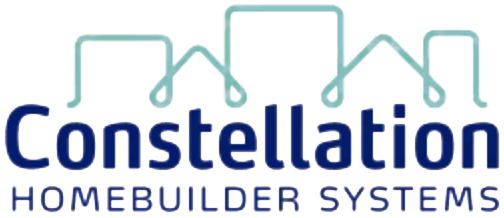Technology
As Homebuilding's Sluice Gates Open For M&A, Integration Is Key
With so many combination deals under discussion, consideration, or moving toward finalization, a challenge in an era that leaves little-to-no margin for error when it comes gaining accretive value is in good implementation and integration.

With tens of billions of dollars of "dry powder" at the ready for deployment in big national public builders' coffers, NDAs, MOUs, and LOIs are a thing right now. At the same time, a veritable "Four Horsemen" of financial, economic, geographic, and demographic conditions bear down at a gallop toward an era in the next three to 24 months of one of homebuilding's most powerful forces of consolidation and concentration in recent memory.
These conditions add accelerant to any private homebuilding operator's "motivators" when it comes to considering an entity sale. Let's briefly review those, as they – in some form or fashion – have catalyzed homebuilding firm sellers for most of the post-GFC recovery through the pandemic era:
- age demographics ... principals in their final career chapter – lacking a family-member succession plan – seek an exit and financial payout
- taking "chips off the table" ... principals timing the cycle and looking to de-risk their business and – by way of personal loan guaranties - their personal financial situations of exposure to a cyclical downturn
- tapping capital to smooth access to lots ... principals with an upward growth trajectory gunning to expand organically or via acquisition
While those three basic causes of urgency continue to play their customary role, intensifying and complicating the present and near-to-mid-term outlook for private companies is a harsher cost-of-capital regime compounded by a more ferocious big-builder concentration push in America's most-active new-home markets, and further plagued by a macro-economy that keeps sending polar-opposite signals about what's next.
All this adds up to an unusually strong current of private homebuilder seller receptivity to 1). taking a deep-pocketed capital partner or 2). selling outright.
With so many combination deals under discussion, consideration, or moving toward finalization, a big challenge in an era that leaves little-to-no margin for error when it comes to a requirement for accretive value in the M&A combinations to come is this:
1) Getting deals across the finish line is only the first, and likely the easier of two parts;
2) Integrating the companies – people, assets, processes, products, and intangibles like reputation and local relationships is a non-option.
In a conversation we published snippets of that we had with United Homes Group president Jack Micenko, Micenko spoke of the need for both strategic and executional competency when it comes to buying companies as a growth and market share game-plan. Deals, he says, have long tails.
Relatively speaking, the harder part of deals is integration," says Micenko. "I've seen from my career – as both a sell-side analyst and an investment banker – too many deals where the integration was more of an afterthought than a focus. We're trying to learn from those those mistakes because last thing you want to do is buy an asset and then just burn it."
Many pre-GFC homebuilding veterans recall a surge of M&A deals in the lead-up to the 2006 and 2007 meltdown. What stands out with 20/20 hindsight is that operations were so busy that even as acquisitions took place, little time, focus, and rigor were committed and invested to implementation and integration. Often, a new family member's systems, processes, and procedures – firing on all cylinders during the boom – were allowed to become orphans, left to themselves. However, once the market crashed and the downturn took hold and resources froze or vanished, it was too late.
The lesson-learned – maybe – was that everybody loses unless the culture, product sets, process, and technologies all pour into an integration investment.
We had a note from our friend, former New Home Company co-founder and ceo Larry Webb, who's been involved on both sides of the M&A equation.
Buying companies is a lot harder than it sounds," Webb tells us. "Integrating them into your system is even harder."
With deep-market-scale competition – and the accretive earnings potential that can ignite– as a No. 1 motivator on strategic acquirers' side, competence in M&A stands as an imperative. To fully recognize the opportunity in financial performance impacts, smooth, fast, and seamless integration at all system levels are essential factors in releasing positive effects of consolidation and ongoing operational cost and revenue gains.
Paolo Benzan, VP, Data Strategy at Constellation HomeBuilder Systems, a partner of The Builder's Daily, explains that at a macro level there are two main issues essential to M&A integration.
(1) Business continuity
- There cannot be a disruption to operations ... Have to keep building homes.
- Purchasing has to keep bidding and procuring as they transition form one platform to another. Keep in mind (work-in-process) WIP and bridging systems.
- Sales and closing have to be recorded accurately.
- Customer commitments must be kept.
(2) Aggregated visibility at the operations, management, and executive level across business functions.
- Management does not have the luxury of losing visibility into the metrics of the organization as a whole.
- Decision-making has to continue to be timely and accurate.
Our Common Data Model bridges the gap between different back-end systems by ensuring that the business critical reporting and analytics remain consistent across the transition from old ERP to new ERP," Benzan says. "By utilizing CDM, the operations team, management team, and executive team have access to aggregated reporting across both entities while the transition is in place and continue to have exactly the same reporting once the transition is complete. From a reporting perspective, the technical transition from one ERP to another is invisible to the business."
Constellation's Benzan acknowledges that, of course, business culture – people and talent focus – as well as customer experience are the alpha drivers of both sustainable growth and accretive earnings. Still, he cautions, if the systems, processes, and technological linkages are overlooked, those higher-up-the-pyramid-of-values opportunities are at risk.
When done poorly, this type of a transition will cost the business in customer trust (from a sales/construction standpoint); margin erosion from the perspective of purchasing and vertical construction errors; and ultimately revenue loss due to lost sales," says Benzan. "For publicly traded companies, there are also audit considerations in ensuring that you are reporting accurate and timely data to shareholders."
When it comes to the art and science of homebuilding M&A deals, the real measure of their success only becomes evident 12 to 36 months later, when the combination is sustaining that accretive value.
Constellation provides fully-integrated or standalone software solutions expertly engineered to manage the complete ecosystem of a homebuilder’s business functions and growth.
MORE IN Technology
What Separates Homebuilders Thriving Amidst 2025’s Chaos
Builders face rising stakes to unify tech, data, and operations or risk falling behind amid affordability, insurance, and labor challenges.
Margin Mission: Homebuilders Race To Crack Inefficiency Code
Spring 2025 has fallen short of expectations. Builders are turning to integrated data systems to protect margins and prep for the next wave.
Reframing What’s Possible: A Housing Factory On The Move
With its 2025 Ivory Prize win, Reframe Systems moves from a promising innovation to a validated force in reshaping housing affordability through modular microfactories, climate-resilient design, and workforce reinvention.


